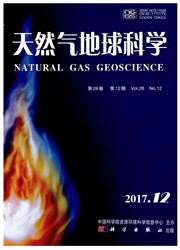

 中文摘要:
中文摘要:
东海盆地西湖凹陷、珠江口盆地珠二坳陷、琼东南盆地和莺歌海盆地天然气地质储量占中国近海天然气总地质储量的70%以上,这几个盆地或凹陷构成了中国近海重要的天然气富集带。这些盆地或凹陷天然气主要为煤型气,天然气来源与腐殖型和腐泥腐殖型烃源岩密切相关,主要烃源岩为海陆过渡相煤系烃源岩,其次为陆源有机质海相烃源岩,有机质均主要来源于陆生高等植物。主要烃源岩形成期,东海盆地西湖凹陷和南海北部具有湿热的气候条件,有利于高等植物的生长和发育。在这种有利的气候条件下,河流三角洲体系是控制富气盆地烃源岩形成的主要因素,河流三角洲体系的发育有利于生物生长的营养物质输入,有利于陆生高等植物有机质的输入,有利于三角洲煤系烃源岩的发育,也有利于海相烃源岩的发育,河流—三角洲体系的发育程度决定了烃源岩的发育程度和生烃潜力。
 英文摘要:
英文摘要:
Geological reserves of natural gas in Xihu Sag for Donghai Basin,ZhuⅡ Depression for Pearl River Mouth Basin,Qiongdongnan Basin and Yinggehai Basin take up more than 70%of whole geological reserves of natural gas of offshore China.These basins and sags formed the gas-rich zone of offshore China.Gases in these basins or sags are mainly coal-formed gas.They were derived from humic or sapropelic-humic type source rocks.The main source rock is transitional coal-bearing source rocks,the secondary source rock is marine source rock whose organic matter mainly originated from terrestrial high plants.Paleoclimate in the Xihu Sag of Donghai Basin and northern South China Sea are wet and hot which is favorable for the terrestrial higher plants in the formation period of main source rocks.Under favorable climate,riverdelta system is the main controlling factor for the formation of source rock of gas-rich zone in offshore China.River-delta system is favorable for the supply of nutritive material for the organisms,and the load of organic matter of terrestrial higher plants,and the formation of delta coal-bearing source rock and marine source rock.The development degree of river-delta system decides the development degree of source rock and its potential of hydrocarbon generation.
 同期刊论文项目
同期刊论文项目
 同项目期刊论文
同项目期刊论文
 期刊信息
期刊信息
